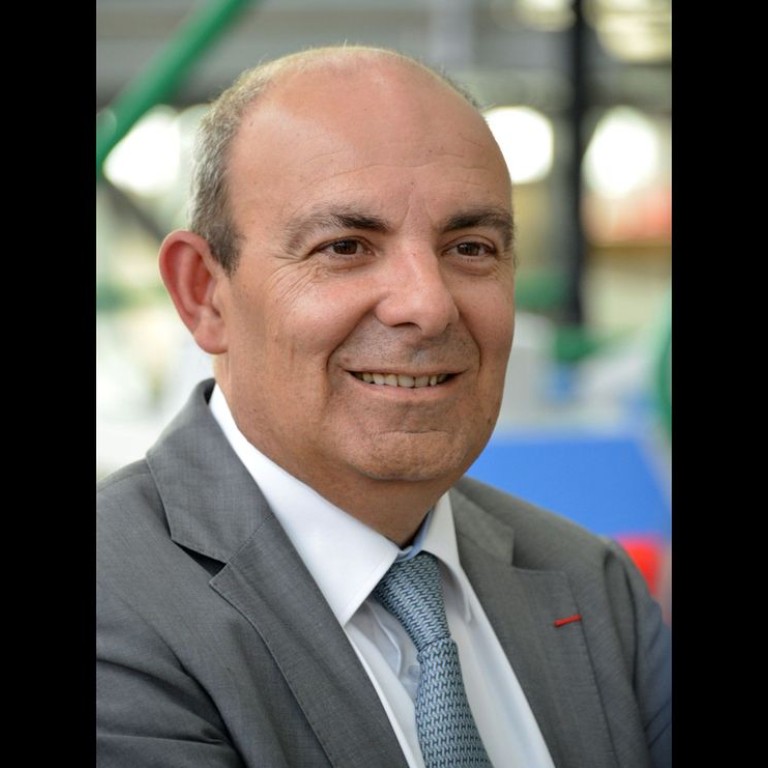
Dassault Aviation launches Falcon 8X on centennial
When a young Marcel Dassault saw airplane inventor Wilbur Wright fly over the Eiffel Tower, he knew at once that aviation would be his calling. From his family's furniture shop in Faubourg Saint-Antoine in Paris, the aeronautics engineer made his first mark on the industry in 1915 by designing a highly efficient propeller he called the Hélice Éclair. His company moved on to develop and manufacture fighter planes through the first and second world wars before designing and fabricating business jets in the 1960s. Today, Dassault Aviation boasts more than 1,000 military planes in operation and about 2,000 business jets across the globe.
"For the last 100 years, we have been known worldwide for developing new technology," says Eric Trappier, chairman and CEO of Dassault Aviation. "We have the distinct advantage of being involved in both military and civil aviation, leveraging technological synergies that help us create many of the best aircraft in the world."
Dassault Aviation is particularly well-known for its Mirage and Rafale fighter jets. Able to take on multiple roles from ground and sea attacks to reconnaissance, dogfights, high-accuracy strikes and nuclear deterrence, the Rafale enables air forces worldwide to do more at a lower cost. One of the advantages of the Rafale, however, is its in-house designed modular data processing unit (MDPU), which is capable of fusing inputs from the aircraft's many advanced sensors into one meaningful data report for the pilot. Providing 50 times the processing power of a typical computer used in previous generations of fighter jets, the MDPU device also allows for the seamless integration of new weapons and capabilities to maintain the war-fighting relevance of the aircraft over many years.
"We allocate 12 per cent of turnover yearly to research and development, and design our own software, actuators and other components in-house so we can be the best in terms of aircraft performance," Trappier says. "We believe we are leading the world in developing flight control systems and aerodynamics." Such commitment to quality is showcased in Dassault Aviation's flagship business jet, the Falcon 8X. To enter service in the second half of this year, the aircraft can fly 11,945km non-stop. This would allow businessmen to travel from Beijing to Los Angeles, from Hong Kong to London, or from Hong Kong to Johannesburg in one hop. Its three powerful turbine engines make the Falcon 8X the only ultralong-range business jet that can also use London City Airport's challenging 1,200-metre runway. In addition, new winglets will reduce drag to boost efficiency, while the fuselage will hold more fuel without reducing passenger space. The overall result is 35 per cent less direct operating cost compared with other passenger jets in its class.
The Falcon 8X will also introduce new standards in passenger comfort. While some business jets have cabin pressure equivalent to about 2,440 metres above sea level, the Falcon 8X will keep passengers comfortable with a cabin pressure equivalent to only 1,190 metres while cruising at 12,500 metres. Noise has also been kept at only 52 decibels, or about the same sound a refrigerator makes. Featuring the longest cabin in Dassault Aviation's Falcon series, the aircraft likewise will offer more than 30 possible layouts to suit client requirements.
"We will be focusing our marketing efforts on Asia, especially on the mainland, Hong Kong, Malaysia, Japan and Indonesia," Trappier says. "We particularly want Chinese businessmen to understand the effectiveness of the Falcon 8X in linking Chinese cities with the rest of the world. We have worked out every detail to ensure that clients reach their business destinations fresh and prepared to work as soon as they land."
http://www.dassault-aviation.com
